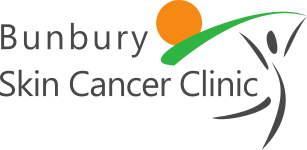The following is an excerpt from an article by Terry Slevin, the research director at the Cancer Council WA.
Terry’s book, ‘Sun, Skin and Health’, is available through CSIRO publishing.
Myth # 1. “I’m safe in the shade”
Shade is great – but we can be lulled into a false sense of security.
Ambient ultra-violet radiation makes up about half of the ultra-violet radiation that we are exposed to. Shade protects against direct ultra-violet radiation (the other half). So if there is nothing else around to block the sun, shade from something like a beach umbrella – even if we manage to stay within the sun blocked section – only cuts the UV dose in half, meaning it is as effective as a sunscreen with an SPF of 2. Shade from a gum tree can be as little as an SPF 3 -4 equivalent and some shade cloth is designed for horticultural purposes with an SPF equivalent of 3 – 4.
Myth # 2. “Salons are safer”
Tanning beds emit three to five times the intensity of midday summer sunlight. Most Australian states, with NSW leading the charge, will be only the second place in the world (after Brazil) to ban them, from December 31 this year.
UV nail lamps are also a source of low levels of artificial ultra-violet radiation, although studies suggest they pose a relatively small risk and it can be almost entirely cut by wearing fingerless gloves or sunscreen when you have your nails done.
No matter how it happens, a tan is a sign your skin has been damaged.
Myth # 3. “Sunscreens are not safe”
One of our important protective weapons is sunscreen. But rarely does a summer go by without someone producing some research or raising concerns about the safety or efficacy of sunscreen, particularly by fear-mongering about nanoparticles. These tiny particles help the sunscreen feel less gluggy on your skin while giving higher sun protection, and experts have found that the levels they penetrate our skin are negligible and will not harm our health.
Despite many efforts, there remains little by way of convincing evidence about the harm of using sunscreen regularly.
Myth # 4. “What about vitamin D”
People who rarely see the sun – the infirm, immobile, aged frail or those who cover up for religious or cultural reasons – can suffer real and serious bone-health problems caused by lack of vitamin D. A little sun in the early morning or late afternoon is not a problem.
But our current “epidemic” of low vitamin D is all about definitions. Most scientists agree levels below 30 nmol per litre of blood are too low and need treatment. Equally most accept 50nmol/L or better is healthy. But is being in the 30 – 50nmol range dangerous? “Not really” is the dominant view.
As scientists debate, clever marketers exploit uncertainty. We spend in excess of $100 million a year on vitamin D testing and an unquantified amount on supplements.
If the definition of “deficiency” is pushed up to 50 nmol/L those numbers will go through the roof. About 23 per cent of us are deficient if you use the 50 nmol/L cut-off, but this drops dramatically to 6 per cent if you use the 30nmol/L cut-off.
Perhaps most interesting and least discussed is emerging research suggesting levels in excess of 100nmol/L may actually increase the risk of conditions such as prostate cancer and heart disease.
